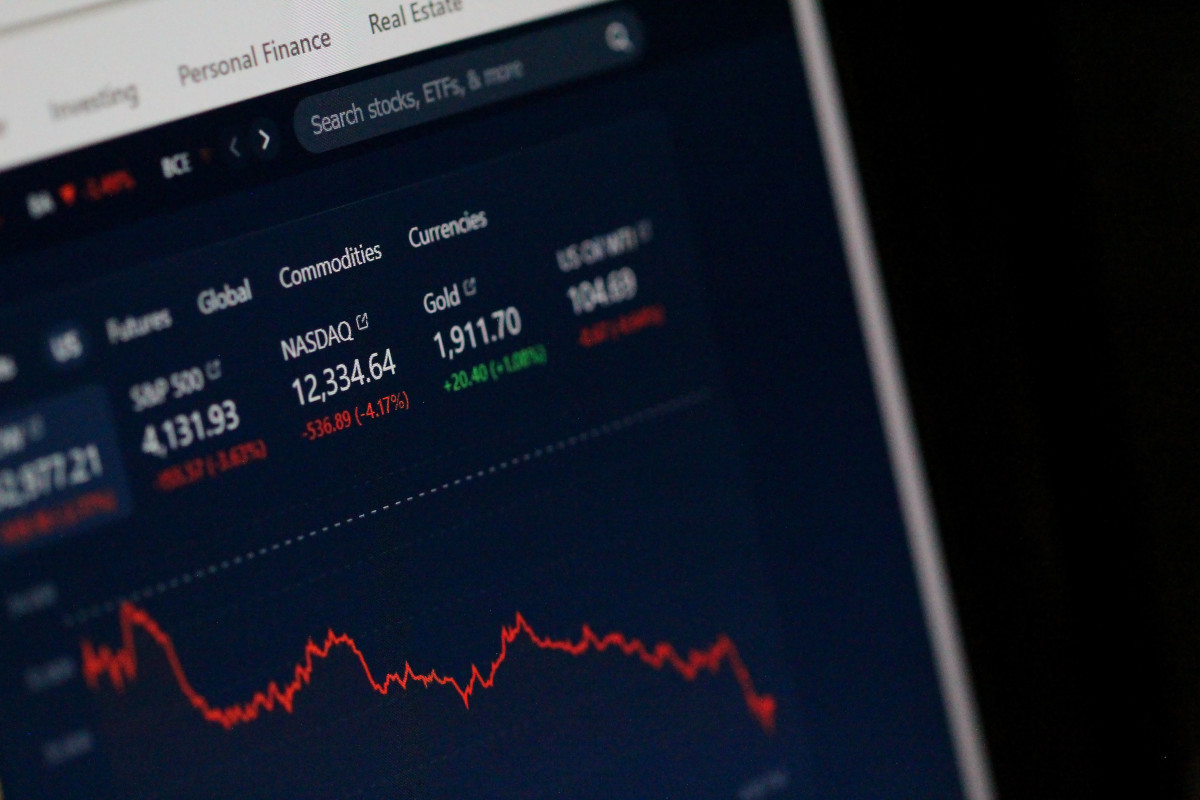Your investing strategy doesn’t necessarily need to be put on pause when the stock market rings its closing bell. In fact, for some investors, that’s when the real intrigue begins.
Imagine having access to the market beyond the usual 9:30 AM to 4 PM Eastern Time. No more waiting for the opening bell to execute your trading plan, missing dynamite opportunities as a result of timing.
Wait – can you buy stocks after hours? And, can you sell stocks after hours? Yes, and yes. Welcome to the world of after hours trading.
The idea of extending your investing activity beyond regular market hours might feel like venturing into uncharted territory, but you’re not without a guide. We’re here to help you feel confident and capable of trading stocks after hours with this detailed discussion.
You’ll learn everything you need to know about buying and selling stocks in between the normal stock market hours. Whether you’re a seasoned trader or a newbie stepping into the world of finance, we’re here to ensure you have the information you need to navigate the extended-hours trading landscape successfully. First – what zare the stock market after hours times, exactly?
What are the Stock Market After Hours Times?
What comes to mind when you think of trading the stock market? Chances are, you’re envisioning yourself with a morning cup of coffee anxiously awaiting the market’s opening bell at 9:30 AM EST.
For the next 6 hours, you’re locked into your screen, tracking technical indicators, researching company news, and executing your investment strategy. The closing bell rings at 4:00 PM EST, signaling the end of the day.
From Monday to Friday, these are the stock market trading hours. As you now know, there is a whole new world waiting for you in the other 18 hours a day – or on weekends. But is it really true – can you buy and sell stocks after hours?
Can You Buy and Sell Stocks After Hours?
Indeed, you can buy and sell stocks after hours. This extended trading period allows investors to react to news and events that occur outside of regular trading hours, such as earnings reports and political developments.
After all, most of these things occur outside of the normal window of stock market hours. But, you’ll discover that the landscape of after hours trading is vastly different from what you may be used to. Let’s take a look at the basics behind buying and selling stocks after hours before we talk about some of the risks…can you buy stocks after hours?
Can You Buy Stocks After Hours?
Absolutely. You can place orders to buy stocks after the regular market closes. This can be advantageous, especially when news breaks out post-market that could positively influence a stock’s price. It allows you to position yourself ahead of the market’s reaction when it opens the next day.
Picture this – you’re laying on your couch lounging around after a hard day’s work. As you scroll Twitter or refresh your email inbox, you uncover a scoop that a stock has finalized a landmark deal that is sure to send share prices higher.
Rather than patiently waiting for the next morning, you can place your trade right then and there. Ideally, you’d end up locking in a lower price before the stock’s price skyrockets at the toll opening bell the next morning. With that said, it doesn’t always work out this way…more on that in a moment. First, can you sell stocks after hours too – or just buy them?
Can You Sell Stocks After Hours?
Similarly, you can also sell stocks after hours. If you foresee a downward movement due to post-market news or trends, you might decide to sell your stocks during this time to prevent potential losses.
Selling stocks after hours can provide you with greater flexibility to manage your portfolio outside the standard trading session. Again, you don’t have to wait for everyone else to become privy to the same information you have.
Let’s look at another example. Say you’re in the same position as we described above, getting up to date on the latest news at the end of the day before bed. When suddenly, a reporter you follow closely sends out a warning that a company is going to be hit with a lawsuit – or that they’re facing a recall.
You could potentially sell off your position right then and there before it tanks lower at the sound of the opening bell the next morning. But, we want to reiterate one more time: this doesn’t always work the way you’d hope when trading after hours. We’ll explain why shortly, and offer tips on overcoming these challenges. There’s just one more question we want to address here: who can trade after hours?
Who Can Trade After Hours?
There is a common misconception about trading stocks after hours that only a select group of individuals can do it. Is it true? Who is allowed to trade after hours, exactly? These days, anyone can do it – including you!
This wasn’t always the case, though. At one point, after-hours trading was a perk reserved mainly for institutional investors and high-net-worth individuals. However, the landscape has changed significantly.
Now, thanks to the advent of Electronic Communication Networks (ECNs) and online brokerage platforms, virtually any investor can participate in after-hours trading. Most major brokerages offer this service, but it’s always wise to check with your broker about their specific policies, as trading procedures and fees can vary.
Why is After Hour Trading Risky?
We’ve mentioned quite a few times that while you can buy and sell stocks after hours, it’s not as simple as placing your order and having it filled immediately. So, why is after hour trading risky?
While the idea of buying and selling stocks after hours might seem enticing, it’s crucial to understand that there is limited liquidity from when the closing bell sounds to when the opening bell tolls.
As a result, you’ll deal with wider bid-ask spreads, increased volatility, lack of transparency, and large price shifts. Let’s dive deeper into these risks below so you know what you’re signing up for when you attempt to engage in after hours trading.
Limited Liquidity
In comparison to regular trading hours, after-hours sessions tend to have significantly less liquidity. This simply means that fewer shares are being bought and sold.
When liquidity is low, it may be more difficult to execute trades at your desired price, and you might encounter delays in order execution. That means you can get your order placed after hours – but there is no guarantee it will be filled at the price you want, or at all for that matter. This leads us to the next problem we want to point out…
Wide Bid-Ask Spreads
Low liquidity can also lead to wider bid-ask spreads. This is the difference between the price at which you can buy a stock (ask price) and the price you can sell it for (bid price). Wider spreads can make it more challenging to execute trades profitably, especially for high-volume traders.
Increased Volatility
After-hours trading sessions can be more volatile than regular trading hours. With fewer participants in the market, prices can swing dramatically in response to news events. This volatility can provide potential profit opportunities but also poses a higher risk if the market moves against your position.
Lack of Transparency
After-hours markets are typically less transparent than their regular-hours counterparts. That means there’s often less information available about other traders’ actions and intentions, making it harder to predict price movements.
Navigating these risks requires a keen understanding of the market dynamics at play during after-hours sessions and a solid strategy. With all that said, there will inevitably be a time where buying or selling stocks after hours makes sense.
So, we’ll teach you how to trade after hours below to minimize these risks as much as possible.
How to Trade After Hours: Buying and Selling Stocks Between Trading Sessions
After-hours trading can seem daunting due to the risks involved, but with the right knowledge and strategies, it can be a valuable addition to your investing approach. Let’s explore some of the steps involved in setting up after-hours trades, strategies you can employ, and how VectorVest can simplify and enhance the process.
Setting Up After-Hours Orders
Trading after-hours involves a specific type of order called a limit order. This type of order allows you to specify the maximum price you’re willing to pay when buying or the minimum price you’re willing to accept when selling. This can help manage the risks associated with the wider bid-ask spreads in after-hours trading.
You’ll need to specify that you want your order to be eligible for after-hours trading. This is usually as simple as selecting an option like “Extended Hours” when placing your order. Again, not all brokerage platforms offer after-hours trading, so make sure your platform supports it.
Strategies for After-Hours Trading
Just as with the best retirement investment strategy or high probability swing trading strategies, it’s important to feel confident in the strategy you use for trading after hours before you actually execute it. There are a few different approaches you can take here to successfully trade stocks after hours:
- News-Based Trading: Significant news often hits companies after the close of regular market hours. By analyzing such news, you can make informed predictions about a stock’s direction. Remember, this requires a good understanding of how news events impact stocks, and there’s always the risk that the market will not react as expected.
- Earnings Reports Trading: Companies often release earnings reports after market hours. These reports can cause significant price movements, presenting opportunities for profit. Again, predicting the market’s reaction to earnings reports can be tricky, so proceed with caution.
- Overnight Price Gaps: Sometimes, stocks experience significant price changes between the close of one trading day and the open of the next. You can potentially profit from these overnight gaps, but remember that they can also result in substantial losses.
Now, before we wrap up this guide on how to trade stocks after hours, we want to leave you with one key piece of advice to maximize your success.
Whether you’re trading stocks after hours, swing trading options, position trading, scalping, swing trading ETFs, trend trading, or investing after retirement, you need to invest in yourself first. Here’s how you can leverage a VectorVest subscription to make after hours trading as lucrative and stress-free as possible…
How to Leverage VectorVest for After-Hours Trading
Our intuitive stock analyzer can help you win more trades with less work. We know what you’re thinking…that’s a bold statement! But it’s true. Our proprietary stock rating system has outperformed the S&P 500 by 10x for more than 20 years, while calling every major market move along the way.
You don’t have to stress over technical indicators like moving averages or worry about staying up to date on the company’s latest EPS any longer. VectorVest gives you a clear buy, sell, or hold recommendation for any given stock, at any given time – eliminating guesswork or emotional investing from your strategy for good. When it comes to trading stocks after hours, there are 3 ways VectorVest can help:
- Real-Time Market Analysis: VectorVest provides real-time market analysis, which can be particularly useful in the rapidly changing conditions of after-hours trading.
- Alerts: With VectorVest, you can set up alerts to notify you of significant price movements or news events for stocks you’re interested in. This can help you stay ahead of the game in after-hours trading.
- Stock Analysis: VectorVest offers in-depth stock analysis features, which can help you evaluate the potential risks and rewards of a particular trade. But as we’ve mentioned already, it simplifies the entire process down to a quick glance at your screen.
- Mobile Stock Advisory: Whether you’re enjoying drinks after work or laying in bed scrolling on your phone, you never have to miss another opportunity with our stock advisory app.
It’s not just the best swing trading platform – it’s the best stock analysis app, period. It doesn’t just help you with how to analyze a stock, either. It brings you the best stocks to swing trade or invest in long term on a daily basis. And now, you can see it in action with a free stock analysis!
Wrapping Up Our Guide to After Hours Trading
In summary, can you buy stocks after hours? Yep. Can you sell stocks after hours? You sure can! But, it’s not as simple as placing your order and having it executed immediately.
As we bring our exploration of after-hours trading to a close, remember that this practice opens up a whole new world of possibilities, but it also comes with its own unique set of challenges and risks. Like how the stock market itself works, after-hours trading can be unpredictable and requires a solid understanding of market mechanics.
However, don’t let this dissuade you from exploring this exciting aspect of investing. With the right tools, like VectorVest, and a careful, informed approach, you can navigate the after-hours market with greater confidence and potentially reap the rewards.
So, step into the world of after-hours trading with your eyes wide open, armed with knowledge, and geared up with the best tools!








Leave A Comment